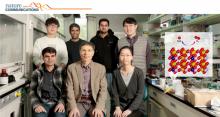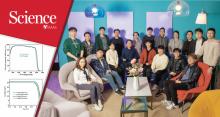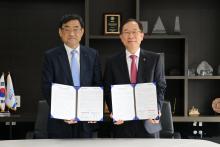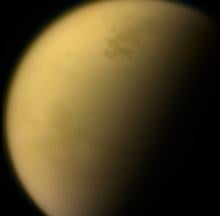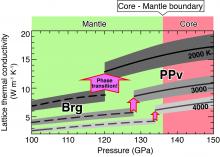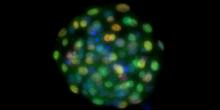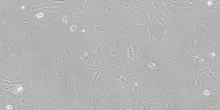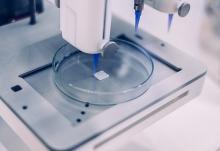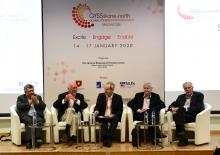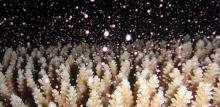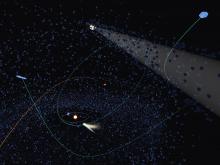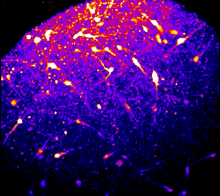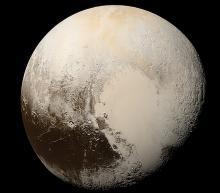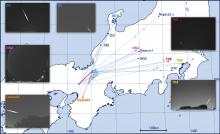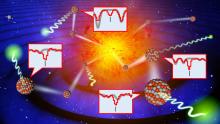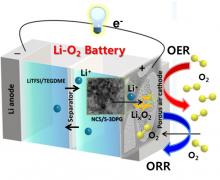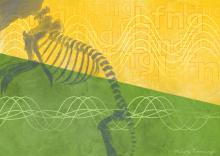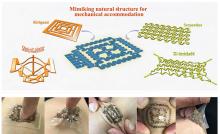Science
News
20 Feb 2020
A recent study, affiliated with South Korea's Ulsan National Institute of Science and Technology (UNIST) has demonstrated bipolar all‐solid‐state Li–S batteries (ASSLSBs) that exhibit exceptional safety, flexibility, and aesthetics, for the first time.
20 Feb 2020
A faculty startup, based at South Korea's Ulsan National Institute of Science and Technology (UNIST) has attracted 7 Billion KRW investment.
20 Feb 2020
A recent study, affiliated with South Korea's Ulsan National Institute of Science and Technology (UNIST) has engineered the light-absorbing layer material with the new composition of perovskite material and applied it to the solar cell.
20 Feb 2020
KAIST · GIST · DGIST · UNIST work together to prepare a joint innovation plan in the areas of education, research, globalization, and system.
20 Feb 2020
South Korea's Ulsan National Institute of Science and Technology (UNIST) has decided to cancel this year's matriculation and commencement ceremonies due to 2019-nCoV outbreak.
20 Feb 2020
A recent study, affiliated with South Korea's Ulsan National Institute of Science and Technology (UNIST) has unveiled a novel biomass conversion technology that can turn forestry biomass residues (i.e., sawdust from timber logging) into higher value fuels and chemicals.
18 Feb 2020
- Participants of 'International SYNAPSE Project', DGIST & POSTECH sign an MOU to build a joint cooperation system
14 Feb 2020
Planetary scientists using ALMA revealed the secrets of the atmosphere of Titan, the largest moon of Saturn.
13 Feb 2020
Lattice thermal conductivities of MgSiO3 bridgmanite and postperovskite (PPv) phases under the Earth’s deepest mantle conditions were determined by quantum mechanical computer simulations. We found a substantial increase in the conductivity associated with the phase change. This indicates that the PPv phase boundary is the boundary not only of the mineralogy but also the thermal conductivity. The effect of anisotropy on the conductivity of PPv in the heat transport properties at the lowermost mantle was also found to be minor.
07 Feb 2020
A calf was born from an embryo lacking cells which form a large part of the placenta, providing new insight into the regenerative capacity of mammalian embryos.
07 Feb 2020
A research team from the Centre for Genomic Studies on Plant-Environment Interaction for Sustainable Agriculture and Food Security recently found that some non-coding RNA can produce very short proteins (small peptides), which play an important role in regulating organismal development and stress resistances. The findings challenge the very definition of non-coding RNAs and may open a new research path for future drug and crop improvement. The research article has been published in the journal Plant Physiology. (See note)
07 Feb 2020
A study by The Chinese University of Hong Kong (CUHK) found that mangroves and other marine wetlands stored 23% more carbon from the atmosphere than previously estimated, which further established the importance of “Blue Carbon” and its contribution to countering carbon emission. This article has been published in the prestigious scientific journal Nature Communications. (https://www.nature.com/articles/s41467-019-14120-2)
07 Feb 2020
A genetic engineering team of undergraduate students at The Chinese University of Hong Kong (CUHK) has been awarded a Gold medal at the International Genetically Engineered Machine (iGEM) 2019 Giant Jamboree held in Boston, USA. Under the project named “Banana Savior: The X Sense”, they have designed a rapid test for a new disease Banana Xanthomonas Wilt (BXW). They hope the novel design can help farmers in Africa and quarantine departments to realise early detection of the disease and help stop it from spreading. This is the sixth time that a CUHK team has won gold in the annual premier synthetic biology competition.
07 Feb 2020
Scientists suggest a new strategy that uses induced pluripotent stem cells (iPSCs) to regulate immune reaction to transplanted tissues.
07 Feb 2020
The way research in bioprinting will be taken forward has been laid out in this roadmap for the field.
04 Feb 2020
Pressing issues in science and technology, including in healthcare and climate change, took centre-stage at the recent Global Young Scientists Summit 2020 where eminent scientists and talented young researchers worldwide convened in Singapore.
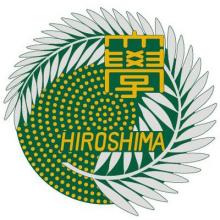
28 Jan 2020
In a recent study from Hiroshima University, researchers turned to mathematics to predict hive patterns in humans.
24 Jan 2020
Silly questions lead to surprising answers about the fundamental nature of the universe. We might have been getting it wrong this whole time.
23 Jan 2020
During the early summer, corals simultaneously release tiny balls composed of sperm and eggs, known as bundles, that float to the ocean surface. Here the bundles open, allowing the sperm to fertilize the eggs where they eventually settle on the seafloor and become new coral on the reef.
17 Jan 2020
Astronomers at the National Astronomical Observatory of Japan have analyzed the paths of two objects heading out of the Solar System and determined that they likely originated from outside of the Solar System.
15 Jan 2020
First-of-its-kind study led by Duke-NUS Medical School and National Neuroscience Institute (NNI) applies experimental methodology using human neural cells and brain organoids to investigate mechanism underlying epileptic seizures in Angelman syndrome, an autism spectrum disorder.
15 Jan 2020
A gassy insulating layer beneath the icy surfaces of distant celestial objects could mean there are more oceans in the universe than previously thought.
15 Jan 2020
Opening plenary lecture by Sir Konstantin Novoselov, Nobel Prize in Physics (2010), at the Global Young Scientists Summit 2020.
15 Jan 2020
Astronomers uncovered the true identity of the fireball spotted on April 29, 2017.
09 Jan 2020
Astronomers have cataloged signs of 9 heavy metals in the infrared light from supergiant and giant stars.
09 Jan 2020
A low-cost catalyst on a sulphur-doped, porous, carbon nanostructure improves the performance of lithium batteries that run on air.
08 Jan 2020
Researchers observe a key gene during embryonic development in single live mouse cells for the first time, providing insight about how the precise timing of development is controlled.
07 Jan 2020
Dramatically improved sensor stability with complex structural design that mimics snake motions, spider webs, and paper craft. Expected to be applied in various fields such as bio-diagnosis, smart skin, clothes, and livestock diagnosis.
06 Jan 2020
Researchers at Kanazawa University report in Analytical Chemistry an efficient method for filling a batch of nanopipettes with a pore opening below 10 nanometer. The method is based on the application of a temperature gradient to the nanopipette tips so that residual air bubbles are driven out.
Giants in history
Chinese biochemist Chi Che Wang (1894 - 1979), one of the first Chinese women to study abroad, advanced to prominent research positions at American institutions including the University of Chicago and the Northwestern University Medical School.
Ruby Sakae Hirose (1904 – 1960) was a Japanese-American scientist whose research contributed significantly to our understanding of blood clotting, allergies and cancer.
Chinese electron microscopy specialist Li Fanghua (6 January 1932 – 24 January 2020) facilitated the high-resolution imaging of crystal structures by eliminating interference.
Sálim Moizuddin Abdul Ali (12 November 1896 – 20 June 1987), commonly referred to as the Birdman of India, was the first person to conduct systematic surveys of birds from across India.
Haisako Koyama (1916 – 1997) was a Japanese solar observer whose dedication to recording sunspots – cooler parts of the sun’s surface that appear dark – produced a sunspot record of historic importance.
Michiaki Takahashi (17 February 1928 – 16 December 2013) was a Japanese virologist who developed the first chickenpox vaccine.
Toshiko Yuasa (11 December 1909 – 1 February 1980) was the first Japanese female physicist whose research on radioactivity shed light on beta decay – the process in which an atom emits a beta particle (electron) and turns into a different element.
Angelita Castro Kelly (1942-2015) was the first female Mission Operations Manager (MOM) of NASA. She spearheaded and supervised the Earth Observing System missions during its developmental stage.
Malaysia’s first astrophysicist, Mazlan binti Othman (born 11 December 1951) was instrumental in launching the country’s first microsatellite, and in sending Malaysia’s first astronaut, Sheikh Muszaphar Shukor, into space.
Known as Mr. Natural Rubber, chemist and researcher B. C. Shekhar (17 November 1929 – 6 September 2006) introduced a number of technical innovations that helped put Malaysia’s natural rubber industry on the world map.
Shinichiro Tomonaga (31 March 1906 – 8 July 1979), together with Richard Feynman and Julian Schwinger, was awarded the Nobel Prize in Physics in 1965, for their contributions to advance the field of quantum electrodynamics. Tomonaga was also a strong proponent of peace, who actively campaigned against the proliferation of nuclear weapons and promoted the peaceful use of nuclear energy.
South Korean theoretical physicist Daniel Chonghan Hong (3 March 1956 – 6 July 2002) achieved fame in the public sphere through his research into the physics of popcorn.
Japanese chemist Kenichi Fukui (4 October 1918 – 9 January 1998) was the first Asian scientist to be awarded the Nobel Prize in Chemistry. Together with Roald Hoffman, he received this honour in 1981 for his independent research into the mechanisms of chemical reactions.
Chinese palaeontologist, archaeologist and anthropologist Pei Wenzhong (January 19, 1904 – September 18, 1982) is regarded as a founder of Chinese anthropology.
Physicist Narinder Singh Kapany (31 October 1926 – 4 December 2020) pioneered the use of optical fibres to transmit images, and founded several optical technology companies. Born in Punjab, India, he worked at a local optical instruments factory before moving to London for PhD studies at Imperial College. There, he devised a flexible fibrescope to convey images along bundles of glass fibres.
Japanese physicist Ukichiro Nakaya (1900-1962) made the world’s first artificial snowflakes. He started his research on snow crystals in the early 1930s at Hokkaido University, where there is an unlimited supply of natural snow in winter. By taking over 3,000 photographs, he established a classification of natural snow crystals and described their relationship with weather conditions.
The field of solid-state ionics originated in Europe, but Takehiko Takahashi of Nagoya University in Japan was the first to coin the term ‘solid ionics’ in 1967. ‘Solid-state ionics’ first appeared in 1971 in another of his papers, and was likely a play on ‘solid-state electronics’, another rapidly growing field at the time.
Charles Kuen Kao (Nov. 4, 1933 to Sept. 23, 2018) was an engineer who is regarded as the father of fibre optics. His work in the 1960s on long distance signal transmission using very pure glass fibres revolutionized telecommunications, enabling innovations such as the Internet.
Chika Kuroda (24 March 1884 – 8 November 1968) was a Japanese chemist whose research focussed on the structures of natural pigments.
Motoo Kimura (13 November 1924 – 13 November 1994) was a Japanese theoretical population geneticist who is best remembered for developing the neutral theory of molecular evolution.
Meghnad Saha (6 October 1893 – 16 February 1956) was an Indian astrophysicist best known for formulating the Saha ionization equation which describes the chemical and physical properties of stars.
Sir Jagadish Chandra Bose (30 November 1858 – 23 November 1937) was a scientist and inventor who contributed to a wide range of scientific fields such as physics, botany and biology.
Osamu Shimomura (27 August 1928 – 19 October 2018) was a Japanese organic chemist and marine biologist who dedicated his career to understanding how organisms emitted light.
Subrahmanyan Chandrasekhar (19 October 1910 – 21 August 1995) was an Indian astrophysicist who studied the structure and evolution of stars.
Joo-myung Seok (November 13, 1908 – October 6, 1950) was a Korean butterfly entomologist who made important contributions to the taxonomy of the native butterfly species in Korea.
Mathematician Maryam Mirzakhani (12 May 1977 – 14 July 2017) was the first and only woman and Iranian to date to win the Fields Medal in 2014 for her work on curved surfaces.
Sir Chandrasekhara Venkata Raman (7 November 1888 – 21 November 1970) was an Indian physicist who performed ground-breaking research in the field of light-scattering.
Mohammad Abdus Salam (29 January 1926 – 21 November 1996) was a theoretical physicist and the first Pakistani to receive a Nobel Prize in science.
Srinivasa Ramanujan (22 December 1887 – 26 April 1920) was a math prodigy and widely considered one of India’s greatest mathematicians. Despite having almost no formal training in mathematics, he made substantial contributions to mathematical analysis, number theory, infinite series and continued fractions.
Gopalasamudram Narayanan Ramachandran (8 October 1922 – 7 April 2001) is best known for developing the Ramachandran plot to understand the structure of short chains of amino acids, known as peptides.
Hitoshi Kihara (1893 – 1986) was one of the most famous Japanese geneticists of the 20th century. One of his most significant contributions was identifying sex chromosomes (X and Y) in flowering plants.
Chien-Shiung Wu (31 May 1912 – 16 February 1997) was an experimental physicist who made several important contributions to nuclear physics. Wu worked on the Manhattan Project – a top-secret program for the production of nuclear weapons during World War II and helped to develop a process for separating uranium into U235 and U238.
Meemann Chang (born 17 April 1936) is a Chinese palaeontologist who studied the fossils of ancient fish to understand the evolution of life. By examining fossils, she uncovered new insights on how vertebrates, animals with a backbone, migrated from the sea and became adapted to live on land.
Bibha Chowdhuri (1913 – 2 June 1991) was an Indian physicist who researched on particle physics and cosmic rays. In 1936, she was the only female to complete a M.Sc. degree at the University of Calcutta.
Lin Lanying (7 February 1918 – 4 March 2003) was a Chinese material engineer remembered for her contributions to the field of semiconductor and aerospace materials. Lanying was born into a family who did not believe in educating girls and she was not allowed to go to school.
Japanese geochemist Katsuko Saruhashi developed the first method and tools for measuring carbon dioxide in seawater


